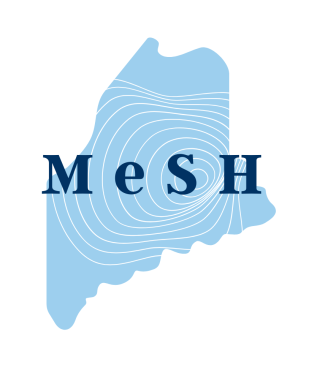Campus Master Plan Sustainability Measures
The University of Maine drafted a comprehensive Campus Master Plan in 2009 to map out development across the next 20 years. The Campus Planning Committee collaborated with Sasaki Associates Inc. to create this plan. UMaine has put significant focus on ensuring that current and future plans emphasize a sustainable vision. It seeks to honor the University’s history while upholding its modern values. This plan is specific, but flexible enough to adapt to program changes and other necessary adjustments.
Some Key Goals established by the Campus Master Plan
- Recommend the best use of physical campus resources while incorporating alternative transportation options and sustainability principles to minimize environmental impacts
- Identify opportunities and constraints for campus improvement and resolve important issues for campus function and development
- Improve campus quality and aesthetics to to communicate UMaine’s mission through its environment, as well as attract and retain students and faculty
- Provide plans for future campus development which address program and demographic changes and funding opportunities, managing capital, and procedures to update whenever necessary to ensure that developments are both current and useful
- Support the realization of the Strategic Plan and institutional vision
PDF Documents

Awards
The Campus Master Plan received the Merit Award for Excellence in Planning for an Established Campus from the Society for College and University Planning (SCUP). Any interested parties can read the SCUP Presentation PDF. The Plan also received the Boston Society of Architects Merit Award for Campus Planning. UMaine’s Campus Master Plan was one of three recognized plans out of twenty submissions.
Sustainability Measures
Natural Systems and Habitats
The Plan takes historical ecology and environmental conditions into account while prioritizing the protection of ecologically diverse and important areas. The University of Maine owns and manages 775 acres of forest land which is utilized for educational, training, and recreational activities. There are several forest and wetland areas near and adjacent to University property which are vital for certain species of waterfowl and other animals. This plan focuses most new construction and development in previously disturbed areas to avoid the loss of natural areas.
Proposed Conditions:
- Commitment to maintain a growth boundary which will not extend into previously undeveloped areas
- Reforest certain areas to connect existing patches of woodland, ensuring a continuity of natural habitat and a potential expansion of campus trails
- Enhance the connection of developed areas to natural ones nearby through tree plantings and the installation of windbreaks
- Remove parking areas from the riverfront and restore a riparian buffer
Water Resources
The Plan will contain all new developments within existing highly developed structures, parking lots, and areas (a total of 176 acres or 11% of campus) to avoid the creation of more impervious surfaces. 26-48.5% of the developed campus area is made up of impervious surfaces which can generate greater levels of runoff and stormwater pollutants flowing into the Stillwater River and surrounding areas. Soils on campus also have low filtration rates and high runoff potential, which can significantly affect the flow of debris and pollution across the campus and local environment. A stormwater analysis broke the campus area into 12 different watersheds which drain into the Stillwater river and the surrounding perimeter. By maintaining fields and forests, reforesting certain areas, and restoring nearby wetland, the campus will have buffer zones to reduce excessive runoff.
The University will be investigating ways to:
- Utilize green roofs
- Incorporate stormwater collection systems
- Reduce overall water use
- Conserve and reuse potable water
Energy and Emissions
As a signatory of the American College and University Presidents’ Climate Commitment (ACUPCC) UMaine is working towards climate neutrality. The ACUPCC requires that Universities reduce emissions from 6 greenhouse gasses listed in the Kyoto Protocol, develop a Climate Action Plan (CAP) which will set a target date for achieving climate neutrality, identify milestones, and analyze and improve education and research activities related to climate change and sustainability, and complete a greenhouse gas inventory to identify where emissions related to campus functions are generated.
Energy efficiency is an important issue when trying to minimize emissions. Many buildings on campus are old and are inefficient in their use of energy, so there will be significant renovations, repairs, and retrofitting depending on the needs of each structure. UMaine will utilize the EPA’s Energy Star program and Architecture 2030, an international nonprofit to address these inefficiencies. Energy needs, patterns of use, and habits must be considered carefully when trying to effectively reduce both institutional and individual energy use on campus. The University will implement measures to improve pedestrian access on campus and encourage students, staff, and visitors to minimize driving after they initially park on campus.
Building Recommendations:
- Utilize existing campus spaces as efficiently as possible
- Improve energy performance of existing buildings
- Establish target Energy Usage Intensity (EUI) for new buildings
- Utilize integrated renewable energy such as passive solar, solar hot water, and photovoltaics
As of 2005, 30% of UMaine’s energy was generated by renewable sources. The University is working to replace all of its existing energy sources with renewable ones such as various types of solar and a cogeneration facility which uses biomass or natural gas. The campus is working to eventually eliminate the use and purchase of fuel oil and energy from nonrenewable sources. Landscape planning which involves the strategic planting of trees will help shelter buildings from wind while maintaining sun access for solar projects.

